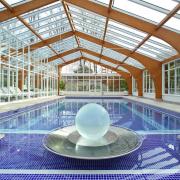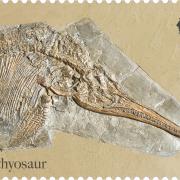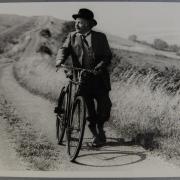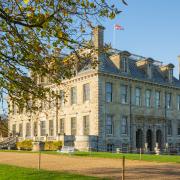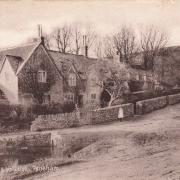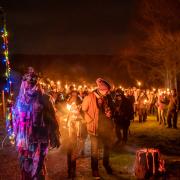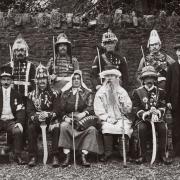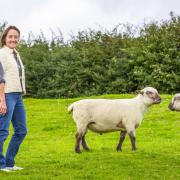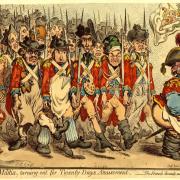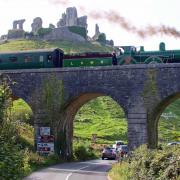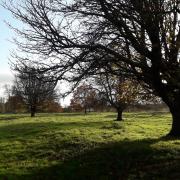From corsets to kaftans the Blandford Fashion Museum reveals the ‘must see’ couture from the 1740s to the 1970s, it also uses Instagram to tell some of the stories behind its collection

It's just before the Second World War. Materials are getting increasingly hard to source. But, after much effort, one bride-to-be manages to get hold of some fabric with which to make her wedding dress. Delighted, she carries her treasured purchase home with her on the bus. Leaping off at her stop, excited at the prospect of making her dress, she runs home - only to discover that she's left the precious fabric on the bus…
At the Blandford Fashion Museum they love stories like this. Perhaps this is due to the very personal nature of its collection. Whether it's a glamorous dress, exquisite silk underwear or the latest fashion accessory, these items were very special to the people who wore and treasured them.
Thankfully, the wartime bride was reunited with her parcel. And today, her dress is in the collection which is in Lime Tree House, an elegant Georgian property on The Plocks, in the centre of town. The museum was founded in 1996 by Betty Penny to house her own collection, known locally as the Cavalcade of Costume.
With pieces dating from 1740 up to the 1970s, the collection has now trebled in size to around 5,000 items, thanks to donations from members of the public.
Lead curator Stella Walker has been involved from the beginning, initially working as an education officer due to her background in teaching. She explains that the collection is in three sections. The first is for the museum-quality items which are kept for display or carefully conserved and stored.

The second is a student collection; these items may be incomplete, or altered, which affects their historic integrity. They are available for students or researchers to study, first-hand.
The third collection is the Suitcase Scheme and these items are taken out to schools where children can handle the fabrics.
Most of the items in the collection have been donated from people living in Dorset, but on occasion they will arrive from further afield. Recently, some beautiful Victorian underwear arrived in a parcel from France and a circular felt skirt was donated from someone in Canada.
Stella's own love of costume and fabric goes back to childhood. "I came from a family of embroiders and seamstresses. I couldn't imagine a time without needles, threads and fabrics," she says.
On the other hand, fellow trustee Helen Walter's interest in the museum arose from her work as a historian - she studied ancient history, but ended up working in theatre costume, which led to studies in dress and textile history.

She arrived in Dorset about eight years ago and visited the museum when she was researching 19th century theatre costume for her PhD. Helen now teaches on the fashion journalism course at the University for Creative Arts in Epsom and on the 3D design programme at Plymouth University. In her teaching she regularly uses examples from the museum which, she says, is unique because it is so accessible. "We can be open to people who want to come and see the collection in a way that the larger museums can't do."
It is also a valuable local resource for the town, able to advise residents wanting to dress up in authentic 18th century costume for the Blandford Georgian Fair held every early May Bank Holiday (blandfordgeorgianfayre.co.uk).
The variety of backgrounds and experience among the volunteers at the Blandford Fashion Museum means they are skilled at what to look for and how to set about uncovering any missing information.
Helen says: "There's a lot of excitement when you get new things in. People often don't know what they have; it's a bit like Antiques Roadshow. Sometimes we may have the same items already, or we may have found something really interesting or rare."
Stella recalls the moment one item came in, "and immediately, I just said; 'That is so, so beautiful'."

It was a long sleeved, floor-length dinner dress, aubergine coloured, with beadwork on the front. "It is such a beautiful coloured fabric and it's very glamorous."
The dress dates to the 1940s, a time when, as Stella points out, the owner would have probably been in uniform or fairly dull day attire - even if she was a civilian.
"It must have been so lovely to dress up in the evening. What was her life like? And why did she keep this one dress?"
A new volunteer at the museum and trustee is Rebecca Pride. Like Helen, her interest in fashion and costume came from her background in the theatre; in her early career she was a theatre designer. She currently leads the costume and performance design course at Arts University Bournemouth and regularly brings her students to the museum.
She loves the way clothing can affect personality, and how it plays a vital role in an actor's performance.

"Clothing can hugely affect the way you walk, the way you hold your spine; your whole demeanour is changed immediately."
One of Rebecca's favourite eras is the 1930s and she particularly loves Dior. "It's the elegance and clever cutting, the way fashion designers used the properties of the fabric and the shape of the body."
Rebecca has been working with Helen Walter to make the collection more accessible and attractive to 21st century fashion fans, developing the museum's website as well as their Instagram and Facebook pages. "My intention is to highlight the 'living museum' by showcasing snaps of the volunteers and their stories on social media. It is the human touch, and the joy of volunteering that I hope to highlight," she adds.
For Rebecca, the Blandford Fashion Museum is extra special and unlike any other costume museum, which is why she wants to spread the word to the younger generation. This is a museum "which has a very special aura, and it's fascinating," she declares.
It seems that every item in this gem of a museum has a tale to tell. "We love anecdotal evidence and the stories behind the clothes, the wedding certificates - any paperwork," says Stella, who then reveals the poignant story behind a trousseau, a collection of items kept by a bride for her wedding day, which was recently brought in by the family of its owner who had passed away. It dates from the First World War; her loved one had been sent away to fight and was reported missing.
"They had had very little time together," says Stella. "But the family found she had always kept her trousseau. And the items were immaculate."
She pauses, then adds: "They also told me that after he was reported missing, she never locked her door, because, she said, 'he may come back and not have the key'."
Follow on Instagram: blandford_fashion | Facebook: @theblandfordfashionmuseum
Helen Walter's favourite piece: The riding habit
"This particular outfit was part of Mrs Penny's original collection from the Cavalcade of Costume, and was originally displayed as an 18th century riding habit.
It was one of the first 'tailored' outfits for women that drew extensively on men's fashion, and the cuffs mimic men's coats of that period. The garment has lead weights in the hem of the jacket and skirt, helping it to hang correctly, and all of the decoration is in metal thread.
However, following further investigation of the fabric that was used, we think this was a 19th century fancy dress costume designed to look like an 18th century riding habit. Fancy dress parties and balls where guests dressed in historic costume were popular in the late 19th century, and this may well have been made for one of those occasions.
I love the way these different stories layer onto this garment, and how it can speak about so many things: of women in menswear, fancy dress and performance, and how easy it is to look at one thing and assume it's something else!"
Living Fashion: Changing the Shape corset
Everything in the museum's collection is authentic; however there is one item which was made especially for a current exhibition, Changing The Shape.
One of Rebecca Pride's students, Isobelle Eve made a replica 1730s' corset, featuring fully boned stays and a silk brocade 'stomacher', complete with a chemise and pocket hoops. The chemise would be worn closest to the body and the pocket hoops on top created the classic 18th century shape - flat at the front and back and dome-shaped from the hips.
It was made, says Rebecca, to help display a 1735 -1740 provincial lady's dress made from Spitalfields silk. "We didn't have a 1730s' corset in the collection, so we made a replica. It was fascinating to see how it fitted on the body. If we had an original corset from that period it would have to be displayed flat as it would be so delicate, so this was a rare opportunity for us to see a fashion piece like this in action."
Let's go!
Current exhibitions at the Blandford Fashion Museum include Changing the Shape, Ladies of Dorset, Styles that Changed Fashion and After the War.
Opening times: Monday, Thursday, Friday and Saturday (10am-4.30pm) Cost: £5.50, (concessions 60+, Students) £4, under 16s free. Lovely tearoom and shop onsite.
If you are interested in booking a speaker from the museum for a lecture on dress history, then please email speakers@blandfordfashionmuseum.co.uk.
More at blandfordfashionmuseum.co.uk or call 01258 453 006.




